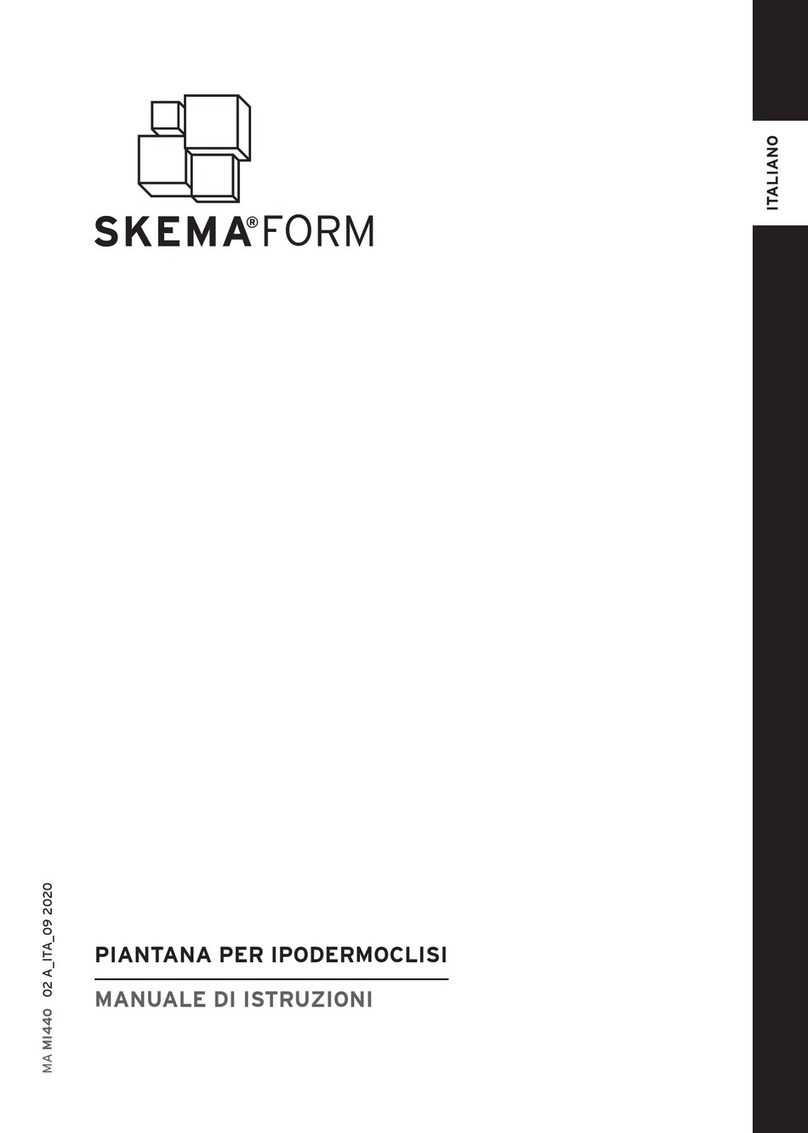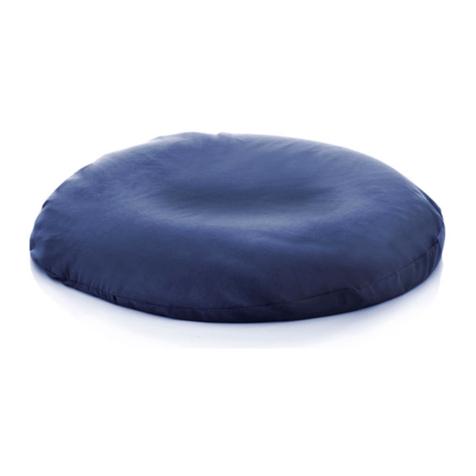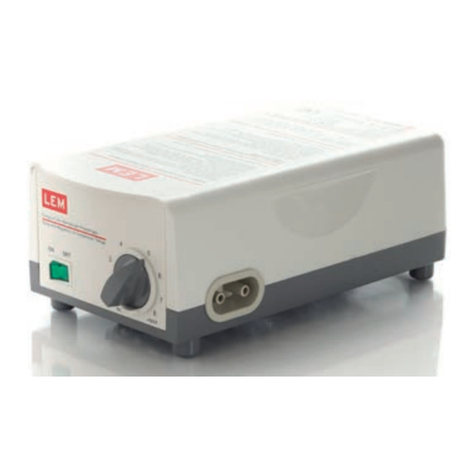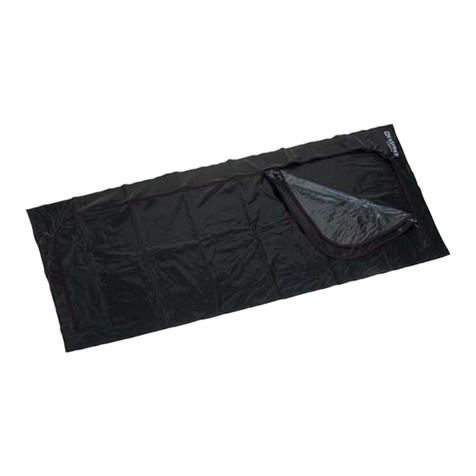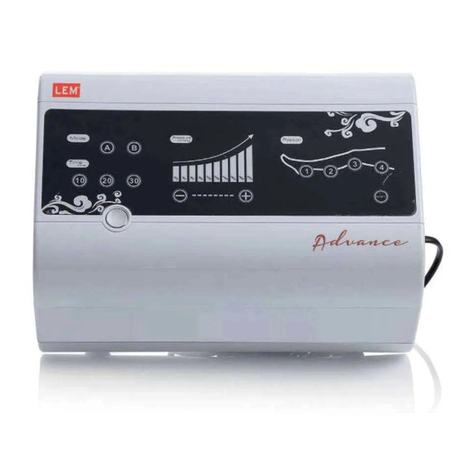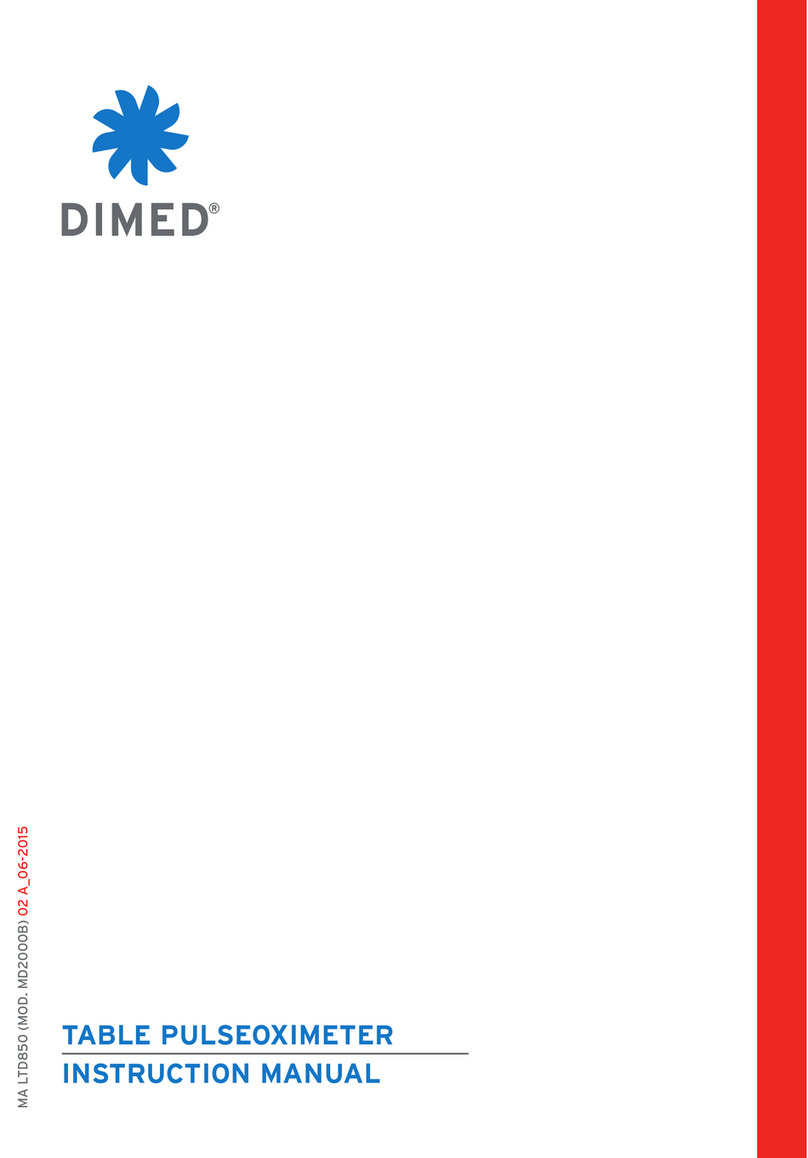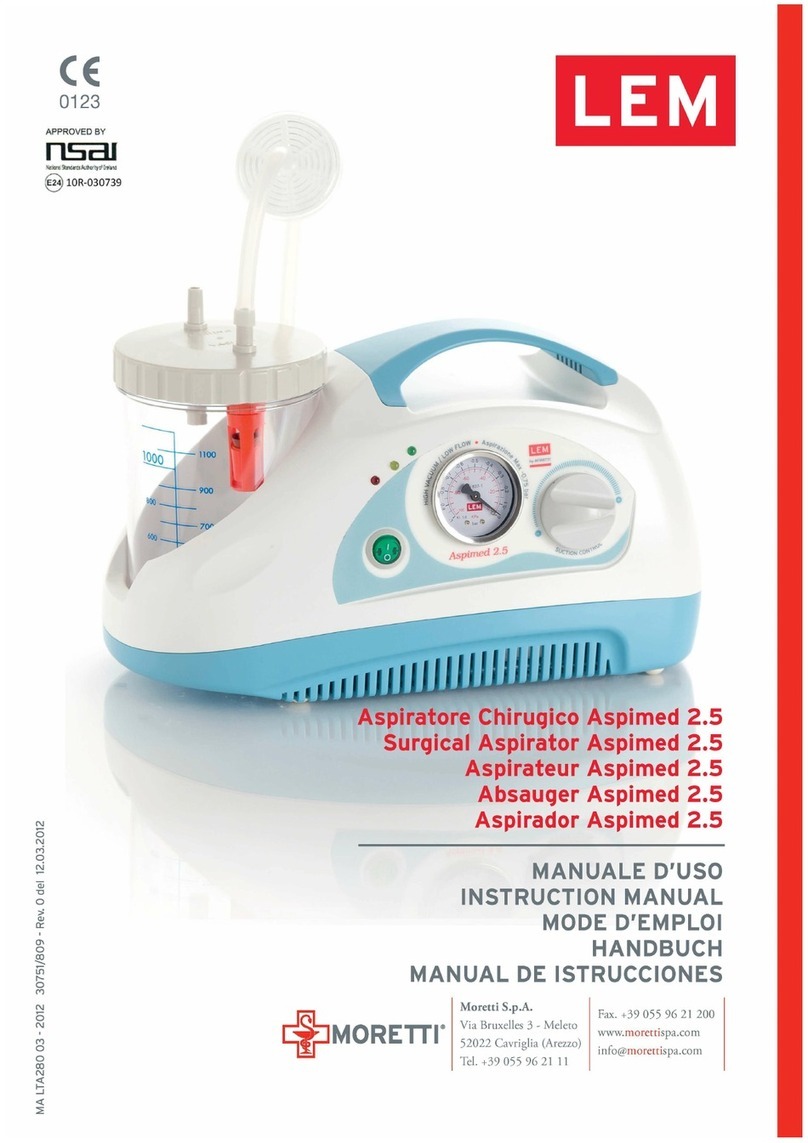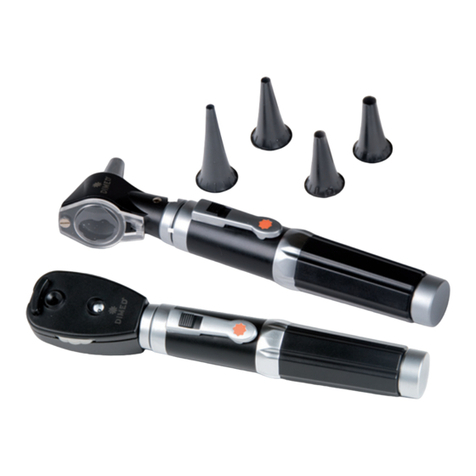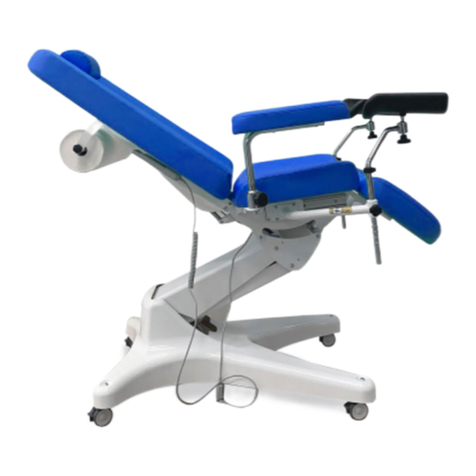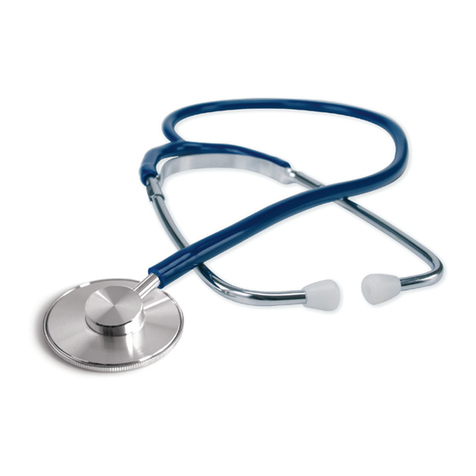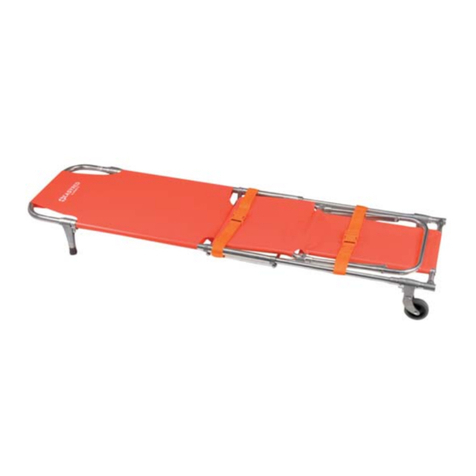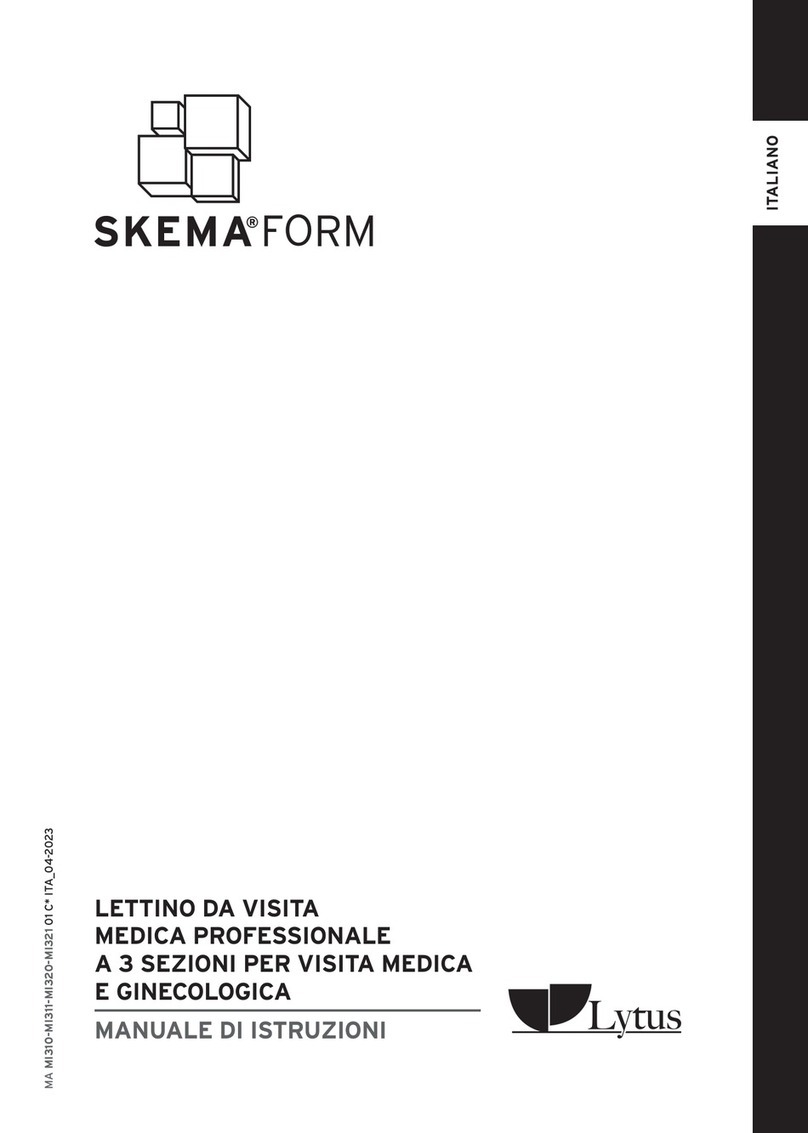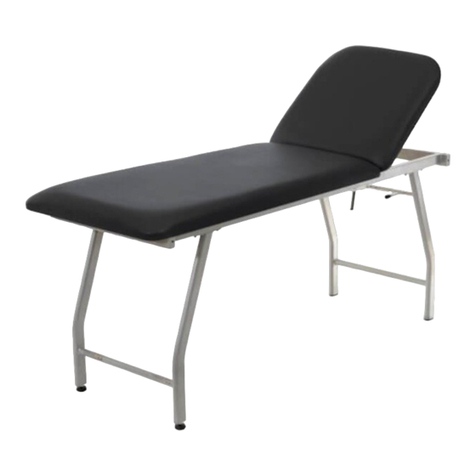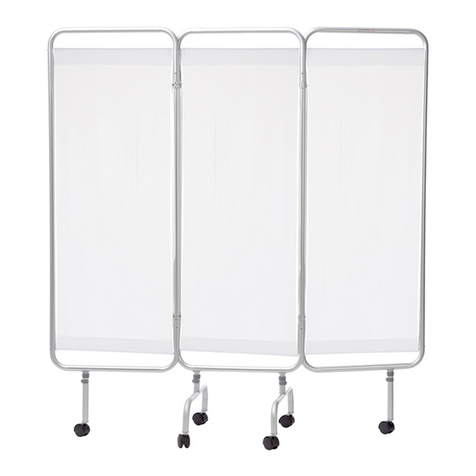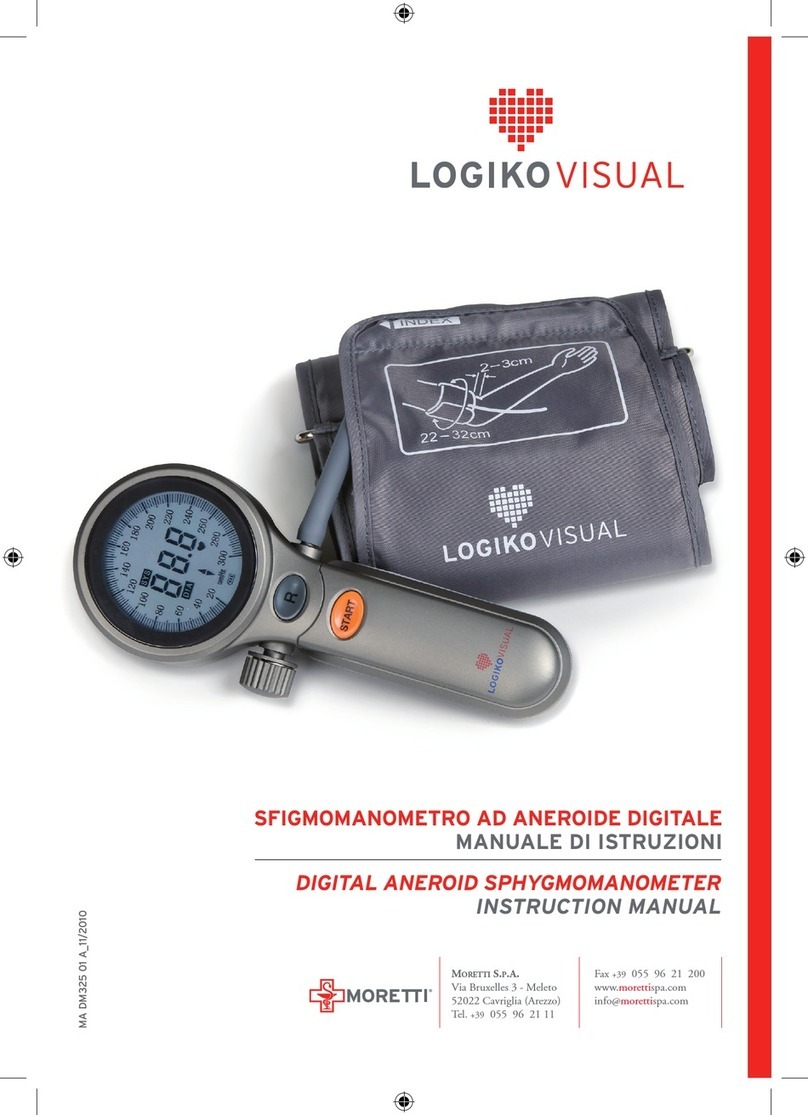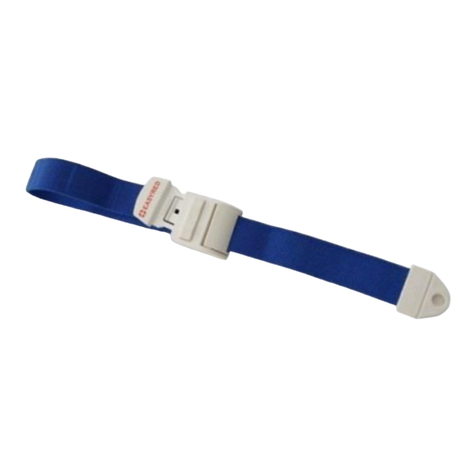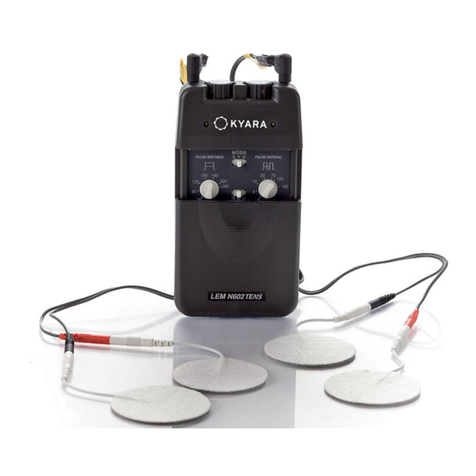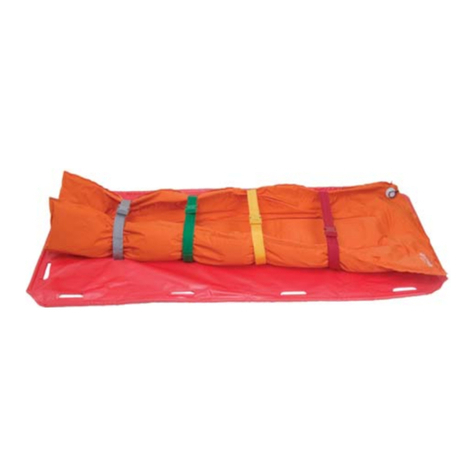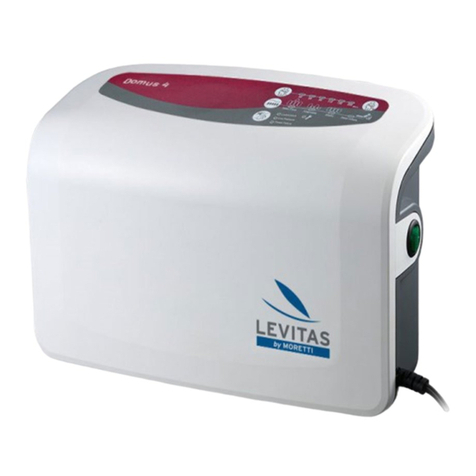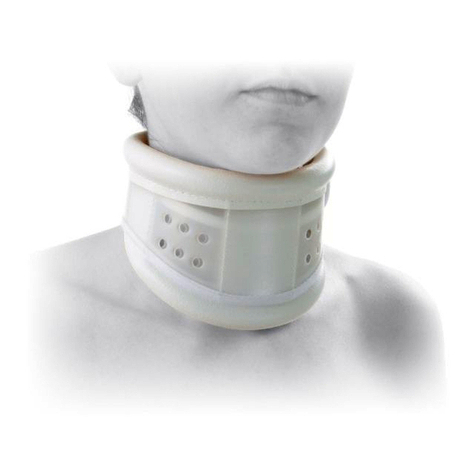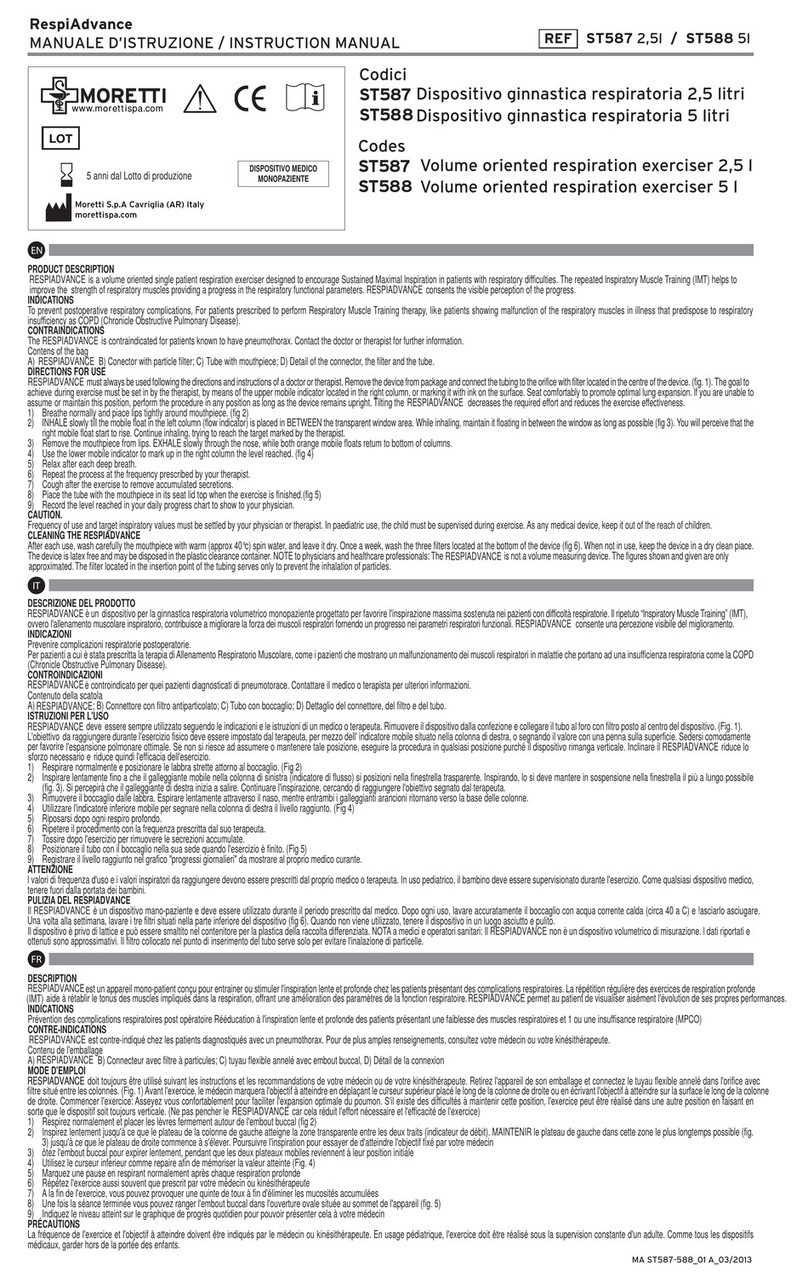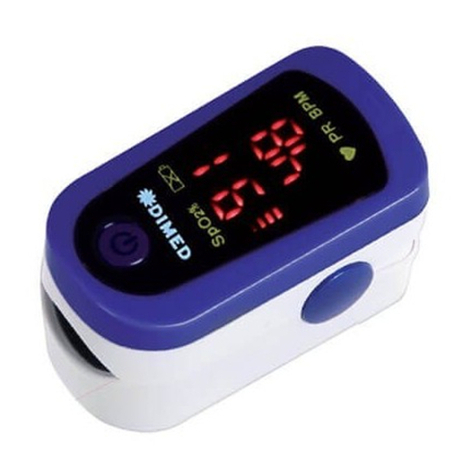TEST 3 FUNZIONE PRINCIPALE DEL RIANIMATORE
1. Assemblare completamente il pallone (la valvola di non ritorno, il pallone, la
valvola del reservoir e il reservoir). Collegare il rianimatore ad una fonte ester-
na di ossigeno e collegare il polmone da test all’uscita del paziente sulla
valvola di non ritorno.
2. Settare la percentuale supplementare di ossigeno a 15 litri al minuto per i
modelli adulti e bambini, e a 10 litri al minuto per i modelli pediatrici.
3. Testare il rianimatore con alcune ventilazioni. Il polmone deve gonfiarsi
durante l’inspirazione e sgonfiarsi durante l’espirazione. Controllare eventuali
perdite alle connessioni. Assicurarsi che il rianimatore si riempia propriamente
e che tutte le valvole operino correttamente. In caso contrario ripetere il test
sopra descritto per cercare dove è il problema.
Temperatura di stoccaggio
-40°C/10°F fino a 60°C/140°F
Temperatura di operatività
-18°C/0°F fino a 50°C/122°F
MATERIALI
Gomma siliconata camera d’aria della maschera adulti,
valvola a becco d’oca, valvola FLAPPER,
guarnizione della maschera, guarnizione
della valvola di rilascio, pallone.
Polisulfonio conchiglia della maschera, struttura
della valvola d’aria, valvola di non
ritorno, custodia, struttura della valvola
di rilascio d’aria, connettore del
reservoir, struttura della valvola del reservoir
Polivinile cloride reservoir
Acciaio inossidabile molla della valvola di sovrappressione
Rilascio della pressione 40+- 5 cmH2O
(ragazzi e bambini)
60+- 5 cmH2O (adulti)
Volume del reservoir 2500 ml adulti e ragazzi
600ml pediatrico
Volume del pallone 1500/1350ml (adulti)
550/350ml (ragazzi)
280/100ml (bambini)
4. Mentre si mantiene bloccata la valvola di non ritorno (mantenedo
occlusa la connessione alla maschera), comprimere di nuovo il pallone
che non si dovrebbe comprimere facilmente. Nel caso in cui ciò non
accada, controllare che si stia bloccando la valvola sufficientemente e
che la valvola dell’aria alla base del pallone sia correttamente assem-
blata.
PROVA DELLA VALVOLA DI NON-RITORNO
1. Collegare la valvola di non-ritorno al pallone.
2. Comprimere e tenere in mano il pallone, la valvola a becco d’oca all’in-
terno della valvola di non ritorno si deve aprire. In caso contrario control-
lare che la valvola di non-ritorno sia assemblata correttamente.
3. Liberare il pallone, la valvola a becco d’oca deve essere chiusa, l’os-
sigeno deve uscire attraverso le uscite della valvola di non ritorno. In caso
contrario, controllare che la valvola sia assemblata correttamente.
4. Ventilare per un minimo di 10 cicli per assicurarsi che il pallone funzioni
correttamente.
TEST 2 RESERVOIR / VALVOLA
1. Collegare il reservoir alla valvola inferiore.
2. Gonfiare il reservoir e bloccarne l’apertura.
3. Comprimere il reservoir. L’ossigeno deve uscire
attraverso l’uscita di sicurezza della valvola del reservoir. In caso con-
trario controllare che la valvola del reservoir sia assemblata corretta-
mente.
4. Collegare il reservoir e la sua valvola al rianimatore.
5. Testare il rianimatore con alcune ventilazioni. La valvola di sicurezza
sulla valvola del reservoir si deve aprire durante ogni rifornimento per
permettere all’aria di entrare nel pallone. In caso contrario, controllare
che la valvola del reservoir sia assemblata correttamente.
Nota: se l’ossigeno supplementare non è fornito, il pallone si riempirà più
lentamente se il reservoir è ancora attaccato.
10 11
ITALIANO
ITALIANO
